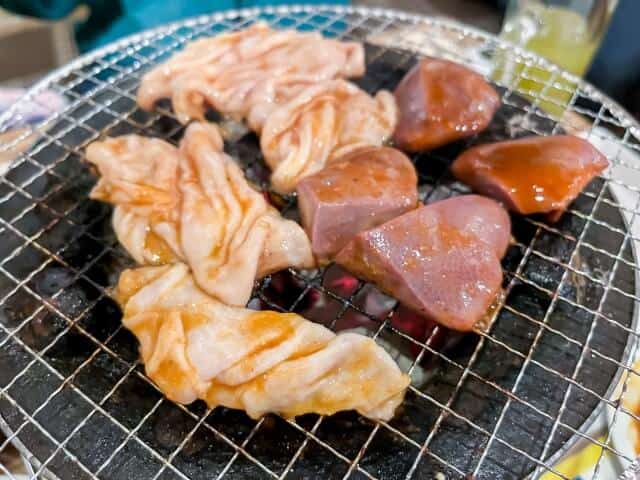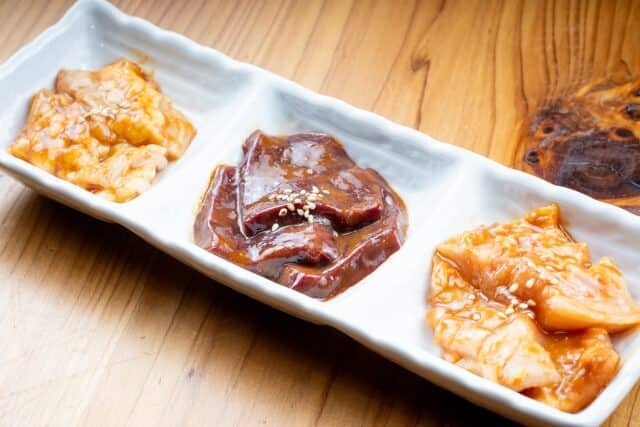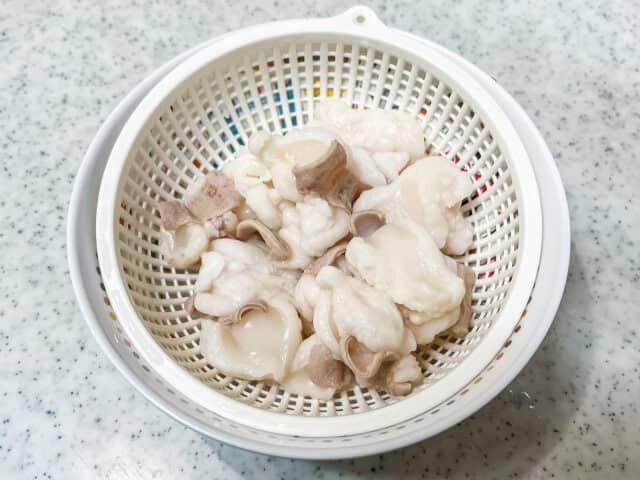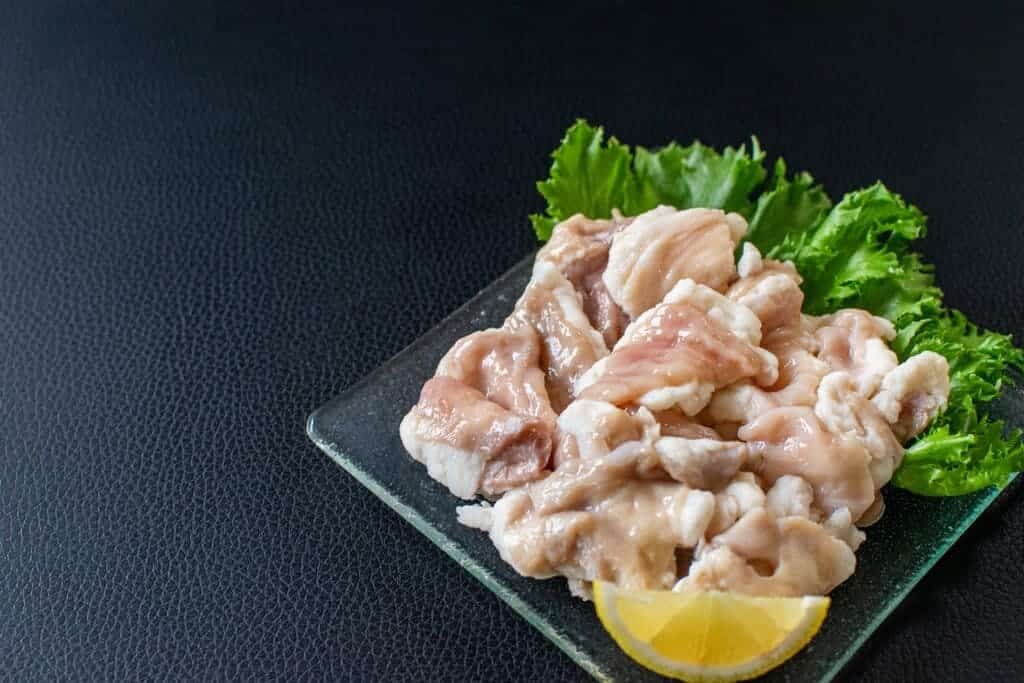Horumon, a staple of Japanese cuisine, offers a flavorful journey into the world of the insides of beef or pig and offal. This unique delicacy reflects the Japanese ethos of minimizing waste and maximizing flavor, making it a cherished part of both traditional and modern dining experiences.
What is Horumon?

Different forms of barbecue can be found across Japan, from Korean-inspired yakiniku to specialty grilled tongue restaurants and other charcoal-grilled cuisines. One popular barbecue experience is “horumon,” which refers to the offal meat of cows or pigs, such as intestines, kidneys, and hearts. Originating in the Kansai region nearly a century ago, locals often served this in specialty barbecue restaurants, and you can find it in stews and noodle dishes.
The term “horumon” comes from the Kansai dialect, derived from the word “hormone,” but it is also a play on words, as “horumon” in Japanese can mean “discarded goods.”
Etymology

The origin of the name “horumon” in Japan has several theories. One unique theory suggests it comes from the Kansai dialect word “hoorumon,” originally used because internal organs, including offal, were discarded rather than eaten. As people began grilling and consuming these parts, the term “hoorumon” in Kansai dialect evolved to refer to this practice. Another theory posits that the name was changed to give a better impression, associating it with the English word “hormone” to suggest vitality and strength. Although the exact etymology remains uncertain, it is clear that offal, or “hormone,” has been enjoyed in Japanese cuisine for a long time.
Origin of Horumon

According to Michio Sasaki’s “Cultural History of Yakiniku” (Akashi Shoten), the term “horumon cuisine” became popular in the 1920s to describe dishes believed to boost energy. Sasaki, referencing Tetsunosuke Tada’s “Zokutabemono Nihonshi” (Shinjinbutsu Oraisha, 1973), notes that offal dishes at the time included not only animal internal organs but also eggs, natto, and yams. The first appearance of offal dishes specifically labeled as such was in Tsunekichi Uotani’s “Choju Ryori” (1936). By the Showa era, restaurants like Sansuiro and Hokokusei began offering these dishes. Based on Michiro Uehara’s “Introduction to Gourmet Food,” it is speculated that motsuyaki (grilled offal) served at popular restaurants before World War II came to be known as horumonyaki.
Originally, horumonyaki referred to grilled offal of Japanese origin. However, after World War II, the influence of Koreans living in Japan popularized grilled offal dishes. In the 1970s, there was a belief that the word “horumon” was a pun on “hormone,” though the term had been in use since 1919. This historical evolution reflects the blending of cultural influences and changing perceptions of offal cuisine in Japan.
Difference between Horumon and Offal

In a yakiniku restaurant, you might see both “horumon” and “offal” on the menu, and while both terms refer to internal organs, they are used differently. Offal generally includes the internal organs of cows, pigs, chickens, and other animals. With dishes like offal stew featuring tongue, heart, and other meats being popular nationwide.
“Horumon,” however, specifically refers to the intestines of cows and pigs. The word is believed to originate from the Kansai dialect word “torumon,” meaning “something to throw away,” as these parts were historically discarded. Although both terms originally have the same meaning, regional variations in usage can make it confusing, with some areas referring to all internal organs as offal and others distinguishing certain parts as hormon.
Various Horumon Dishes

In Japan, many dishes feature offal from beef, pork, chicken, and other meats. These include offal stews, grilled offal, offal hot pots, and stir-fried offal. The specific parts used, accompanying ingredients, and seasonings (such as salt, miso, soy sauce, or various sauces) vary by region, restaurant, and cuisine, leading to a wide variety of preparations.
Additionally, regional specialties include dishes like motsunabe, grilled horumon, stir-fried horumon, Atsugi Shirokoro Horumon, Kesennuma Hormone, salt hormone, doteni, tecchan, tonchan, keichan, otaguri, nanko hot pot, nakamashiru, and hejajiru. These names and preparations reflect the local culinary traditions and unique flavors found throughout Japan.
Concept of Horumon in Japanese cuisine

The concept of horumon is deeply rooted in the Japanese principle of “mottainai,” which means “it’s a shame” or “that’s wasteful.” In Japanese society, waste is looked down upon, and there is a strong commitment to minimizing byproducts of consumption. This principle extends to Japanese cuisine, where it is essential to use every part of an animal to avoid waste.
In Japanese culinary traditions, locals eat animals with reverence, and utilizing all edible parts as a tribute to the animal. Hormon, therefore, is more than a culinary choice; it is a cultural statement reflecting Japan’s respect for nature’s resources. It embodies the commitment to maximizing utility and minimizing waste, making hormon a significant aspect of Japanese dining and culture.
Horumon FAQ
- How do locals typically prepare and serve Horumon?
-
Locals commonly prepare this by grilling over an open flame or on a hotplate, similar to other yakiniku meats. It can also be stir-fried or stewed. They usually served this with dipping sauces and condiments and often enjoyed alongside vegetables and rice.
- Is horumon healthy to eat?
-
Horumon can be a healthy addition to the diet when prepared properly. Offal is rich in essential nutrients such as iron, zinc, vitamin B12, and protein. However, it is also important to consume this in moderation, as some types of offal can be high in cholesterol and fat.
How to make Horumon?

Start by rubbing the horumon (offal) with salt to help remove any unpleasant odors. After rubbing, wash the horumon thoroughly under running water to ensure it is clean. Next, boil the horumon for 5 minutes in hot water with added ginger and salt. This process not only further cleans the horumon but also helps to tenderize it and remove any remaining odors.
While the horumon is boiling, mix the sauce ingredients in a bowl. Combine miso, grated garlic, sugar, soy sauce, bean sauce, and dashi stock. Stir well until all the ingredients are fully integrated into a smooth, flavorful sauce. This sauce will give the horumon a rich and savory taste.
Prepare the vegetables by cutting the cabbage and chives into bite-sized pieces. This ensures they cook evenly and blend well with the horumon. Set the vegetables aside as you will be adding them to the pan later.
Heat oil in a large frying pan over medium heat. Once the oil is hot, add the cabbage and bean sprouts to the pan. Stir-fry the vegetables until they begin to soften, ensuring they are evenly coated with the oil and cooked through.
Pour the previously prepared sauce over the horumon and vegetables into the frying pan. Mix everything well, ensuring that the horumon and vegetables are evenly coated with the sauce. Let the mixture cook for a few more minutes to allow the flavors to fully develop.
Once everything is well-mixed and heated through, transfer the stir-fried horumon and vegetables to a serving bowl. Your delicious “Stir-fried Horumon and Bean Sprouts with Garlic Miso” is now ready to enjoy!
Takeaway

In summary, horumon is a cherished part of Japanese cuisine that showcases the country’s approach to using all parts of the animal. Minimizing waste, and creating delicious, hearty dishes that highlight the flavors and textures of organ meats. Whether enjoyed in a cozy izakaya or a bustling yakiniku restaurant, hormon offers a truly unforgettable dining experience that celebrates tradition, innovation, and the timeless art of Japanese cuisine.






Comments